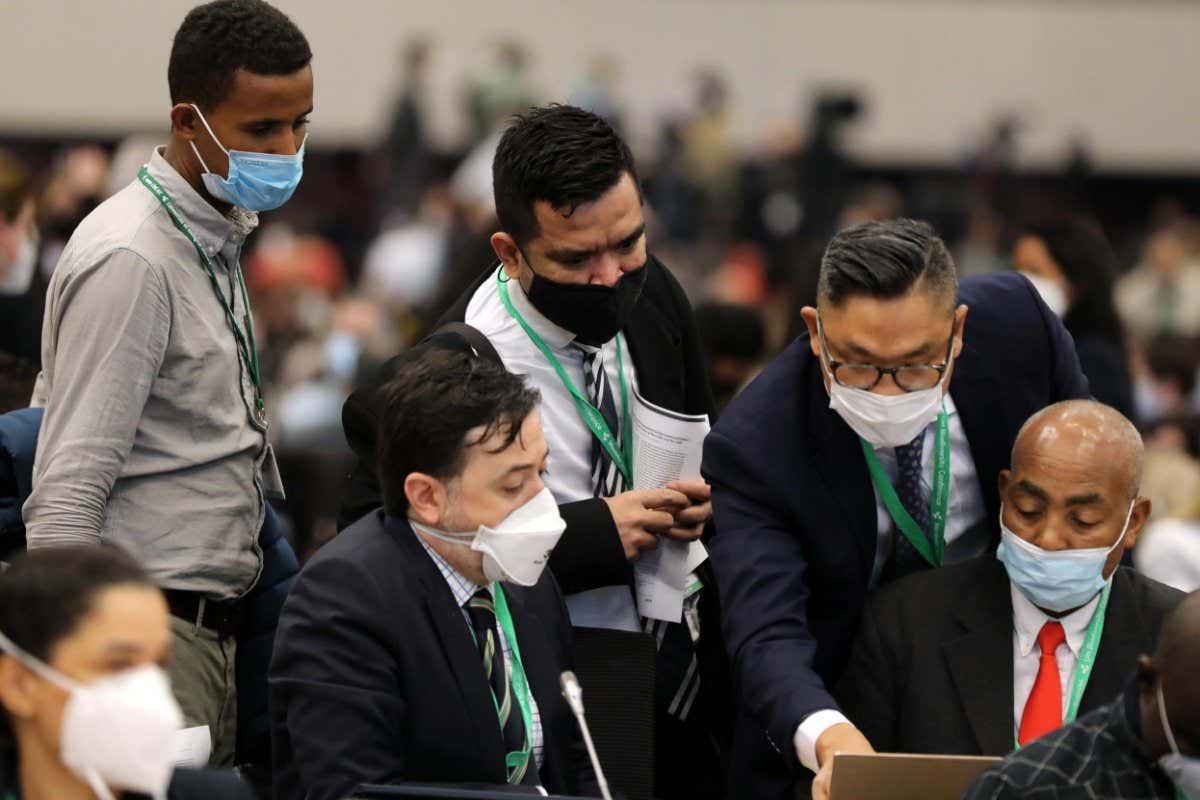[ad_1]
Astronomers analysing data from the James Webb Space Telescope have spotted signs of chemical reactions driven by star light in the atmosphere of an exoplanet for the first time
Space
22 November 2022
An artist’s impression of the exoplanet WASP-39b NASA/JPL-Caltech/Robert Hurt; Center for Astrophysics-Harvard & Smithsonian/Melissa Weiss
The James Webb Space Telescope (JWST) has spotted chemical reactions driven by starlight taking place in the atmosphere of a distant alien world for the first time, raising hopes that the telescope could help identify exoplanets that host life.
Many of the compounds found in Earth’s atmosphere, including some that are essential for life, didn’t exist when the planet first formed. Instead, they were the product of chemical reactions triggered by light from the sun. These photochemistry reactions also occur in the atmospheres of almost all the other planets in our solar system, and so were predicted to happen in exoplanet atmospheres. But until now, they had never been observed.
In August, JWST observations of the exoplanet WASP-39b, a 900°C ball of gas as massive as Saturn and wider than Jupiter, found the first evidence for carbon dioxide in an exoplanet atmosphere. But astronomers also spotted a strange bump in the signature of the planet’s light, which suggested an unknown element or molecule was absorbing the host star’s light as it passed through the planet’s atmosphere.
Now, Katy Chubb at the University of St Andrews in the UK and her colleagues have analysed data on WASP-39b’s light taken from four infrared instruments on JWST. “The large range of wavelengths covered by the four different instruments really allows us to build a complete as possible picture of this atmosphere as we can,” says Chubb.
The team divided into subgroups and used a range of atmospheric models to mimic the signal from JWST. Only models that included chemical reactions involving sulphur could reproduce the data, suggesting the bump was caused by atmospheric sulphur dioxide, says team member Éric Hébrard at the University of Exeter, UK. “We were very surprised because as soon as we each independently implemented the sulphur chemistry, it fit right away.”
The levels of sulphur dioxide were far higher than they should be if the planet is made only from material created when the star system formed. The only explanation, says Chubb, is that light from the planet’s star, WASP-39, has caused a chain of chemical reactions in the planet’s atmosphere to produce the sulphur dioxide.
“We haven’t been able to probe such processes in the deep atmosphere before the JWST era,” says Nikku Madhusudhan at the University of Cambridge, who wasn’t involved in the research. “The results are an excellent demonstration of JWST capability for exoplanet spectroscopy.”
Identifying photochemical reactions on WASP-39b could also help indicate whether the planet formed further out from its star and moved inwards, picking up material across its star system, or whether it formed at its current location and simply accumulated material there. Early observations of the oxygen to carbon ratio suggests it formed far away from its star, but more definitive data will be needed first, says Chubb.
The find also bodes well for observing more compounds produced by photochemical processes, such as ozone on Earth, says Hébrard. “Even if [WASP-39b] is very different than what we have on Earth — it’s hot, it’s hydrogen dominated, you don’t want to live there — having that first detection of a photochemical product is one way forward.”
Ultimately, such detections could help in one of JWST’s most important mission goals: searching for signs of an exoplanet that could host life. “We need to cover a lot more in order to answer those biosignatures problems, but it’s the first step along the way,” says Hébrard.
Reference: arxiv.org/abs/2211.10490 & arxiv.org/abs/2211.10489
Sign up to our free Launchpad newsletter for a voyage across the galaxy and beyond, every Friday
More on these topics:
[ad_2]
Source link




